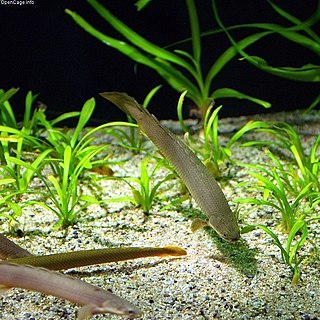Catopsalis is a genus of extinct mammal from the Paleocene of North America. This animal was a relatively large member of the extinct order of Multituberculata. Most Multituberculates were much smaller.

Christinus is a genus of Gekkonidae geckos found in southern regions of Australia. It contains species and subspecies that are regionally termed as marbled geckos. The contrasted patterns of these geckos, marbling, are found in a variety of reddish-brown, grey, silver, white, black and purplish hues. They are frequently found in old knotted trees and sometimes congregate in large numbers in established urban environments.

Peter Wilhelm Lund was a Danish paleontologist, zoologist, archeologist and who spent most of his life working and living in Brazil. He is considered the father of Brazilian paleontology as well as archeology.

Carl Fredrik Fallén was a Swedish botanist and entomologist.
Pepinia alexanderi is a species of plant in the family Bromeliaceae. It is endemic to Ecuador, where it is known from only three subpopulations in Morona-Santiago Province. It grows in Amazonian forest habitat, and it is threatened by deforestation.
Christinus alexanderi, also known as Alexander's southern gecko or Alexander's marbled gecko, is a species of Gekkonidae geckos found in the Nullarbor Plain of Australia. It is one of the many species and subspecies regionally termed as marbled geckos.
Toxorhina is a genus of crane fly in the family Limoniidae. It can be distinguished among other crane flies by the reduced number of veins in the wings, among other less apparent differences.
T. fragilis may refer to:
Embrithosaurus was a pareiasaur from the Permian of South Africa.

Cladistia is a clade of bony fishes that currently consists of few anguilliform (eel-shaped) remnants of an ancient diversity. Their major synapomorphies are a dorsal fin with independent rays, and a posteriorly elongated parasphenoid.
C. alexanderi may refer to:
Eupachygaster is a genus of flies in the family Stratiomyidae.
Leptospira alexanderi is a species of Leptospira. Its type strain is strain L 60T.
Syndelphax alexanderi is a species of delphacid planthopper in the family Delphacidae. It is found in North America.
Amblycorypha alexanderi, the clicker round-winged katydid, is a species of phaneropterine katydid in the family Tettigoniidae. It is found in North America.
Toxorhina magna is a species of limoniid crane fly in the family Limoniidae. This species can be found on the East Coast of the United States as far west as Michigan and as far south as Florida. Its yellowish brown color its most obvious difference from the grayish Toxorhina muliebris which is found in the northern parts of T. magna's range.
Toxorhina muliebris is a species of limoniid crane fly in the family Limoniidae. The adult of the species can be found flying in mid-June to August on the East Coast of North America from Quebec to Virginia and as far west as Wisconsin. Its grayish color is the most obvious difference from the yellowish brown Toxorhina magna which is found in the southern parts of the range of T. muliebris.
Paradelphomyia americana is a crane fly in the family Limoniidae found in Central and South America. It was previously included in the genus Toxorhina but has been reclassified.
Toxorhina approximata is a species of limoniid crane fly in the family Limoniidae. This species is known from a specimen taken at 1500 meters on Mt. Tsaratanana in Madagascar. The specimen is now stored at the United States National Museum of Natural History.



